Medlar (Mespilus germanica) was one of the nicest trees grown in courtyards. Besides pleasing, medlar fruits, often overlooked, gad hidden merits as tasty and useful gifts of nature.
Medlar is a prickly subtropical evergreen shrub or tree of the Rosaceae family. There is dark gray bark on the trunk and branches, and the leaves are large, lanceolate, glossy, and the bottom very fuzzy. The flowers are white or pale yellow, with a strong aroma.

Medlar, like the quince, is medium developed tree or shrub, but with smaller sizes - from 3 to 4 m Just as quince, medlar develops short sprouts on top in early spring, with flower buds. They bloom late and almost suffer from spring frosts.
The fruits of the medlar are small, spherical, oval or pear-shaped, with fine fuzz on the skin and juicy sour-sweet flesh. They sharpen towards the handle. There are many hard seeds coated with the very flesh and is difficult to separate from it.
The most common Medlar have lighter or darker gray-brown, rough, hard and tough skin. The flesh inside is pale. At maturity, the medlar has a strong bitter taste and is not consumed. Can be eaten only after they stay and putrefy, like a wild pear. Edible medlar is soft and have a pleasant sweet-sour taste. Medlar thrives best in temperate climates and any soil as long as it is are not extremely poor and gravel, because they are water-loving.
It is believed that the home of medlar (Mespilus germanica) is the Caucasus, and there its spread throughout Europe started. Since ancient times medlar is prized as food and medicine. There is historical data to show that the fruit has been cultivated since before 1000 BC, in countries in Asia and the Front in West China. Even the ancient Thracians had known the advantages of medlar well.
To date, medlar is grown mostly in California (USA), Japan, Spain, Southern France, Italy and others.
Composition of medlar
Medlar should not be underestimated in terms of containing useful elements. In the brownish fruits, a lot of starch, cellulose, pectic substances and organic acids are found, mainly malic, citric and tartaric. In the softened fruit, following the start of fermentation acetic acid is formed too.
Medlar is suitable food for diabetics because the sugars in these fruits are borne of fructose and glucose Some vitamins in it that have beneficial effects on our health are vitamin C, carotene, vitamin B1 and B2. There are some minerals - potassium, calcium, phosphorus, magnesium, iron and sodium. Medlar’s nutritional value is equivalent to the average for varieties of apples and pears.
In fact, the chemical composition of medlar puts it closer to apples because they contain up to 6, 7% malic acid, 10-19% sugar, citric acid, vitamin C, tannins and aromatic substances, pectin, etc. phytoncides. The leaves do contain quite a few tannins.
Selecting and storing Medlar
Once ripened on the tree, medlar are still inedible. They should be allowed to be cut off putrid to gain flavor. Medlar is usually harvested in September and October as initially claimed, but after the first fall of frost, they become soft, sweet and aromatic and their flavor decreases.
It is important to pick carefully and pick without shaking because are easily hurt. When picking medlars in piecing frost, you should put them in boxes in 40 to 50 cm thick layers. Store in a cool, well-ventilated place that will allow you to keep them for up to 2 months.
Medlars should not be spread very thin because they will dry easily and are shriveled, making them unfit to eat. While Medlar mature, regularly inspect and remove the rubbery and mashed fruit. Otherwise you can get a mold that can damage other fruits. If you can’t get medlar after frost, it is better to eat them immediately because they will rot faster.
Culinary use of medlar
It is best to eat medlar fresh and in a softened state. But then these fuzzy autumn fruits are popular in the preparation of jams, marmalades, pesto, sauces, juices. They are often used in fruit cakes and pastries. It is interesting to know that the seed is prepared as a coffee substitute. If you have larger quantities of medlar, you can dry them in the sun or conserve them. Here's an easy recipe for a delicious jam.
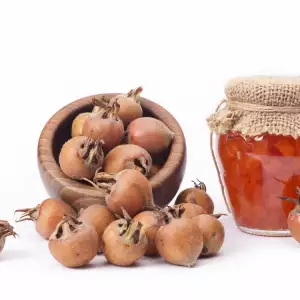
Medlar jam
Ingredients: medlars - softened 3 kg, sugar - 1 kg, cloves - a few grains, cinnamon - 1 stick
Method: Boil the cleaned medlars in a little water, to make them more soft and rub them through a sieve or colander. Discard seeds and skins, and put the mush to boil along with cloves and cinnamon for about 5 minutes. Add sugar and stir until thickened. Remove the cinnamon and pour the medlar in warm jam jars, which are to be closed immediately.
Benefits of medlar
A number of benefits from the consumption of medlar may be listed. It is believed that they act on the endocrine and digestive system, making them particularly useful for cases of reduced function of these organs. Medlar is recommended in diseases of the bladder, kidneys and liver.
Organic acids in the fruit are prevailingly malic, citric and tartaric, have a good effect on the blood vessels and the nervous system. If you suffer from in gastrointestinal disorders, you can eat and hard and unripe medlar, because they contain tannins, which will help. As a counterpoint to the green, ripe fruit have markedly more diuretic and are an appropriate remedy for inflammation of the kidneys and urinary tract.
Good styptic is a decoction of the leaves of medlar (1 tablespoon to 1 cup water). Medlar has since ancient times been respected for its ability to enhance and improve digestion. Moreover, decoction of leaves of medlar helps with colds and sore throats. In asthma and bronchitis, apply tincture of medlar.
Eastern Recipe
Mix 5 mashed fruits, 2 tablespoons of dill and 100 grams of sake (Japanese vodka, 28 percent). Allow to stand for several days, and filter. Take 100 g three times a day before meals.
This mixture can clean your lungs of mucus and ease breathing. If you wash it warmed quickly through a straw, it helps to eliminate coughs.


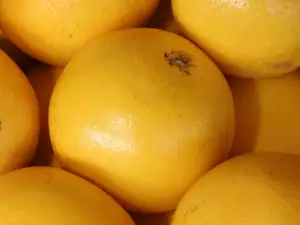

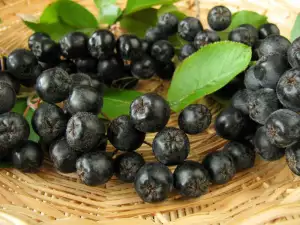
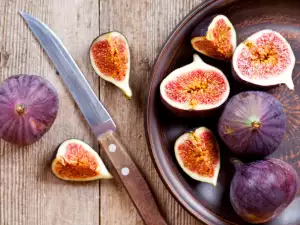


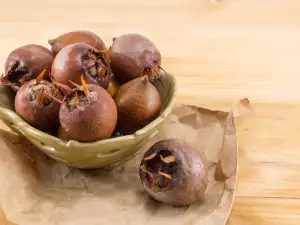
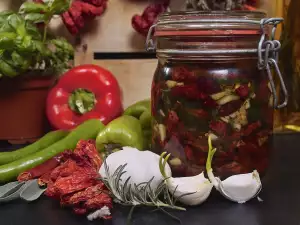


Comments
I eat them quite often. What's wrong with this. They taste great - not unlike a fresh Lychee.
Are they bad for you?